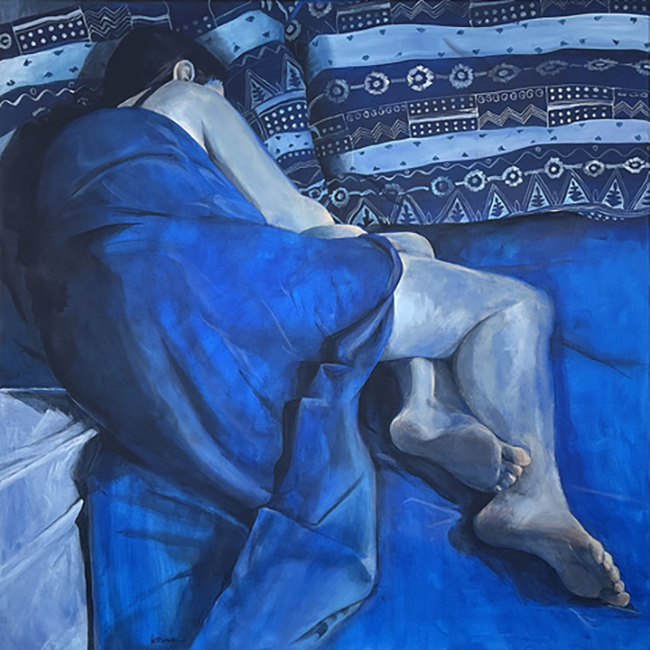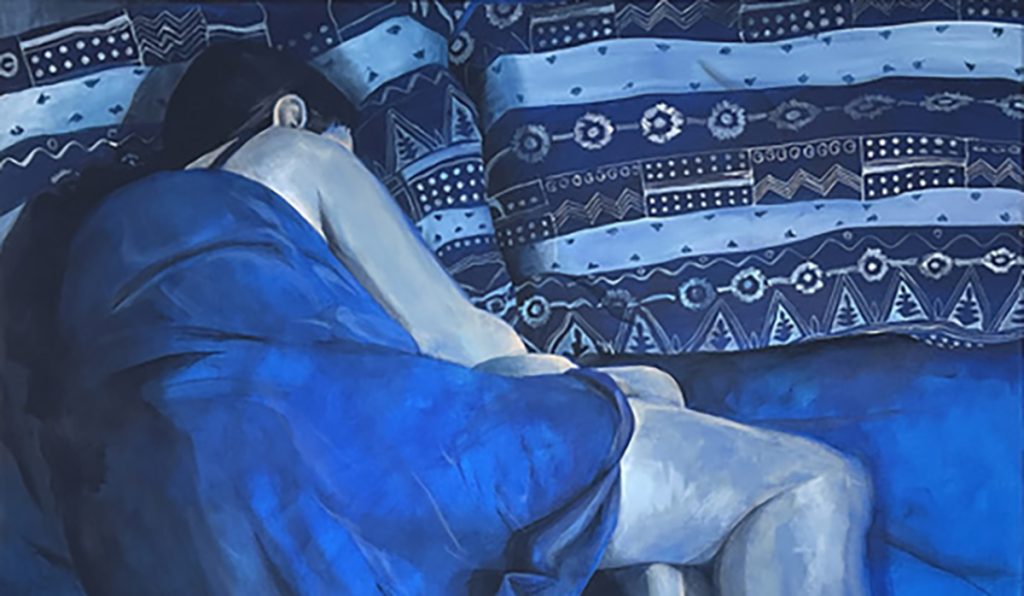Alain Rouschmeyer is a French artist who moves fluidly between the disciplines of painting, drawing, and architecture. His art is rooted in the human form—not as an isolated subject, but as something that exists in constant dialogue with space. With a background in architecture, Rouschmeyer approaches his compositions with a deep awareness of structure and framing. His recurring theme, Chemin Faisant (or Crossroad), reflects his ongoing interest in human posture and movement through everyday environments. He sketches often in real time, observing how people inhabit space, how paths intersect, and how simple gestures carry emotional weight. There’s a quiet poetry in his work—a tenderness in how posture and place are rendered not just visually, but emotionally. In this interview, Rouschmeyer speaks about the architectural roots of his art, the challenges of artistic recognition, and his hope that viewers bring their own stories to the scenes he so thoughtfully creates.

Here is the artist’s interview.
1. What is your creative process like?
I sketch a lot on the spot, I like to work on the human posture and the paths and spaces crossed. My main theme is Chemin Faisant or Crossroad.
2. Do any personal experiences shape your work?
Without a doubt, I’ve been working on architecture for a long time, which is very closely linked to my theme.
3. What challenges do you face as an artist?
My main challenge is undoubtedly that of many artists today: trying to make a living from my art and, above all, getting my work recognized.
4. What do you want people to feel when they see your art?
I want people to be able to make my work their own, through a connecting line that may simply be to adapt or create a story that embeds emotion, a memory of their own, with a poetry of the everyday that we no longer know how to look at.
Alain Rouschmeyer’s art invites us to slow down and pay attention to the spaces we move through each day. His drawings and paintings are gentle reminders that posture, place, and presence are deeply connected. Influenced by years in architecture, he crafts visual paths that feel both personal and universal. His hope isn’t just to show us something—but to hand over the thread, allowing viewers to weave their own emotions, memories, or quiet realizations into the work. In a world that often rushes past the ordinary, Rouschmeyer captures its poetry—and encourages us to do the same.


